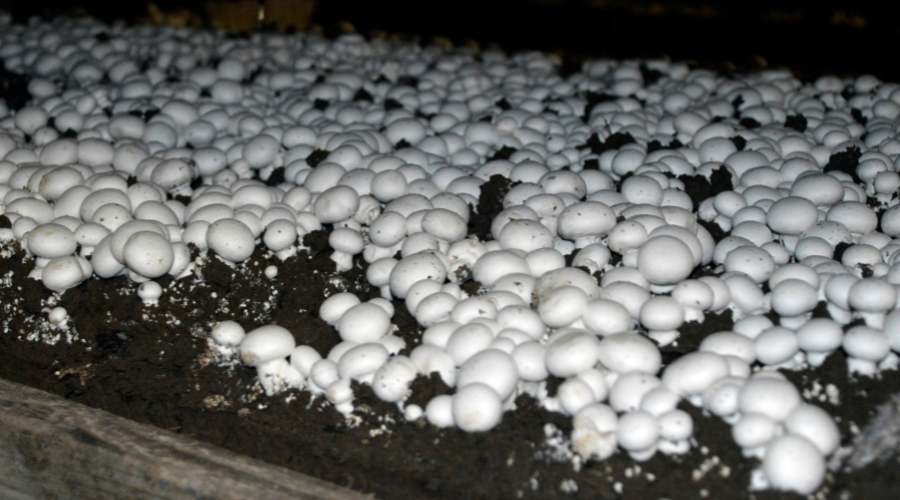Mushroom farming is a lucrative and eco-friendly venture that has captured the interest of many aspiring agricultural entrepreneurs.
With the growing popularity of gourmet mushrooms and the rising awareness of their health benefits, the demand for these unique fungi has never been higher.
This comprehensive guide will walk you through the process of starting your own mushroom farm, from selecting the right mushroom variety to scaling up your production.
Choosing the Right Mushroom Variety
Before you dive into mushroom farming, it’s essential to determine which mushroom species you want to cultivate. Some popular edible mushroom species include:
- Button mushrooms (Agaricus bisporus) – The most widely-consumed mushroom variety, known for its mild flavor and versatility in various dishes.
- Oyster mushrooms (Pleurotus ostreatus) – Fast-growing and easy to cultivate, these mushrooms have a delicate flavor and tender texture.
- Shiitake mushrooms (Lentinula edodes) – Prized for their rich, earthy taste and chewy texture, they are commonly used in Asian cuisine.
- Lion’s mane mushrooms (Hericium erinaceus) – Distinctive for their unique appearance and delicate, seafood-like flavor, they also boast various health benefits.
When selecting your mushroom variety, consider factors such as growing conditions, market demand, and potential profitability.
Research the ideal growing conditions and the market demand for the species you’re interested in, as well as the potential profit margins.
Setting Up Your Mushroom Farm
Choosing a Suitable Location
Mushrooms can be cultivated either indoors or outdoors, depending on the specific variety and environmental factors.
Indoor cultivation allows for greater control over temperature, humidity, and lighting conditions.
This is particularly important for mushroom species with more stringent growing requirements.
Outdoor cultivation, on the other hand, is more cost-effective but may have less consistent results.
Preparing the Growing Substrate
Mushrooms grow on a variety of substrates, including straw, hardwood sawdust, or even coffee grounds.
The choice of substrate depends on the mushroom variety and availability.
Once you have chosen your substrate, sterilization is crucial to eliminate any potential contaminants that could inhibit mushroom growth or introduce diseases.
Common sterilization techniques include steam pasteurization, chemical treatment, or solar sterilization.
Obtaining Mushroom Spawn
Mushroom spawn is the fungal mycelium used to inoculate your substrate.
You can either purchase spawn from a reputable supplier or produce it yourself, although the latter requires more advanced knowledge and equipment.
When selecting a spawn supplier, look for quality assurance and consistency in their products.
Cultivating Mushrooms
Inoculating the Substrate
To begin the cultivation process, the sterile substrate is inoculated with mushroom spawn. This process must be carried out in a clean environment to minimize contamination.
The inoculated substrate is typically placed in growing containers, such as bags or trays, which are then stored in a designated growing area.
Creating the Ideal Growing Environment
Mushrooms require specific environmental conditions to thrive. Here are some key factors to consider:
- Temperature – Different mushroom varieties have different temperature requirements for optimal growth. For example, button mushrooms grow best at 60-70°F, while oyster mushrooms prefer slightly warmer temperatures of 75-85°F.
- Humidity – High humidity levels (80-95%) are necessary for mushrooms to grow and prevent the substrate from drying out.
- Light – While mushrooms don’t rely on light for photosynthesis, some species require indirect sunlight or artificial light to trigger fruiting.
- Air circulation – Proper air circulation is essential to maintain optimal humidity and temperature levels and prevent the growth of mold and other contaminants.
Monitoring and Maintaining Optimal Conditions
Regular checks of the growing environment are crucial to ensure optimal conditions for mushroom growth. Keep an eye on temperature, humidity, and air circulation, and adjust these factors as needed.
Investing in equipment such as hygrometers, thermometers, and humidity controllers can help you monitor and maintain the ideal environment.
Harvesting and Marketing Your Mushrooms
Determining When to Harvest
Harvesting your mushrooms at the right time ensures optimal flavor, texture, and appearance. Signs of maturity vary depending on the mushroom variety.
For example, button mushrooms are ready to harvest when the cap is fully opened, while oyster mushrooms are best picked when the edges of their caps begin to curl upwards.
Harvesting techniques include twisting and pulling or cutting the mushroom at the base of the stem.
Post-Harvest Handling
Once harvested, mushrooms should be cleaned gently to remove any substrate remnants.
Proper storage is essential to maintain freshness and quality. Most mushrooms should be stored in a cool, dark place in breathable packaging to prevent moisture buildup.
Consider the shelf-life of your chosen mushroom variety, as this will impact how quickly you need to sell or process them.
Marketing Strategies
Effective marketing is key to the success of your mushroom farm. Consider the following strategies:
- Identifying target markets – Research potential customers, such as restaurants, grocery stores, farmers’ markets, and health food stores.
- Packaging and branding – Create attractive, professional packaging that showcases your mushrooms and includes essential information such as variety, weight, and harvest date.
- Distribution channels – Establish reliable distribution channels to ensure your mushrooms reach customers promptly and in excellent condition.
Tips for Scaling Up Your Mushroom Farm
Expanding Production
As your mushroom farm gains traction, consider expanding production to meet growing demand.
This could involve increasing the growing area, adding new growing rooms, or investing in automated systems for tasks such as substrate preparation or harvesting.
Diversifying Mushroom Varieties
Adding new mushroom varieties to your product lineup can help you tap into new markets and cater to diverse customer preferences.
Research emerging trends and niche varieties that could set your mushroom farm apart from the competition.
Implementing Efficient Systems and Technology
Efficiency is vital for the success of any agricultural venture.
Explore the latest technology and innovations in mushroom farming to streamline your processes, reduce labor costs, and improve overall productivity.
Challenges and Potential Pitfalls
Common Beginner Mistakes
New mushroom farmers may face several challenges, such as underestimating the importance of maintaining a sterile environment or failing to monitor growing conditions closely.
Be prepared to learn from mistakes and seek advice from experienced growers.
Dealing with Pests and Diseases
Pests and diseases can pose significant risks to mushroom production. Regularly inspect your growing area for signs of infestation or disease and take prompt action to address any issues.
Maintain strict hygiene practices and monitor your growing conditions closely to minimize these risks.
Ensuring Consistent Product Quality
Customers expect consistency in the quality, taste, and appearance of your mushrooms.
Establish stringent quality control measures and continuously strive to improve your cultivation techniques to ensure a consistently high-quality product.
Conclusion
Starting a mushroom farm can be a rewarding and profitable venture with the right planning, dedication, and knowledge.








